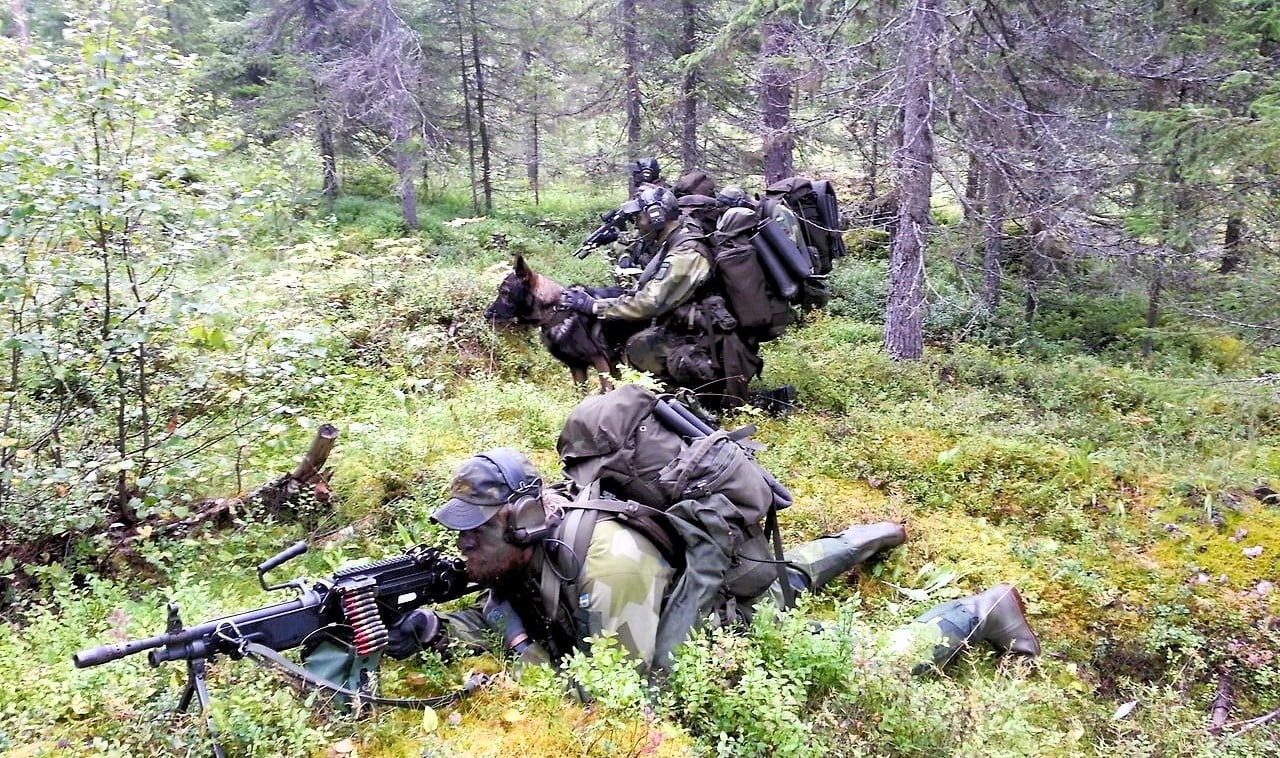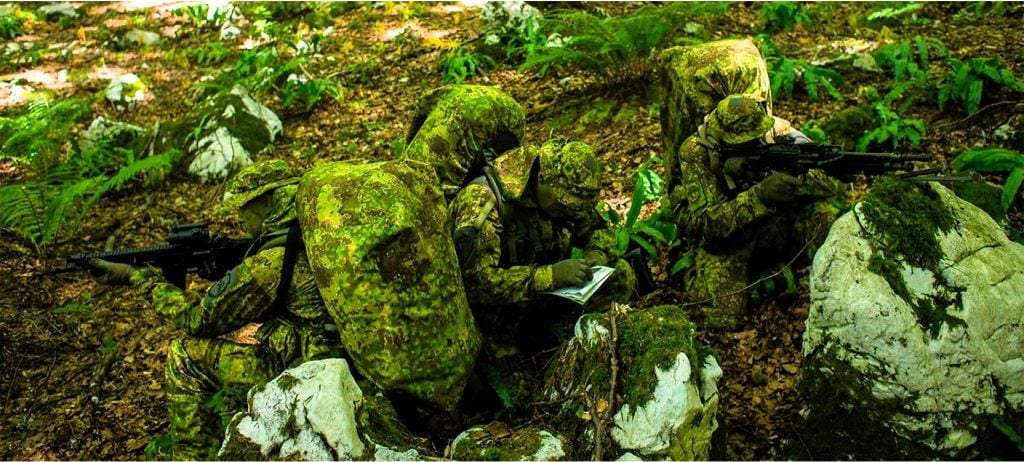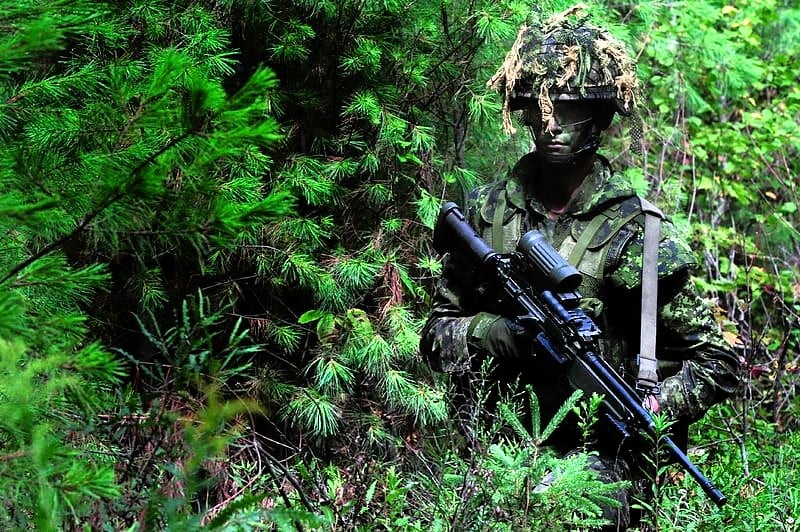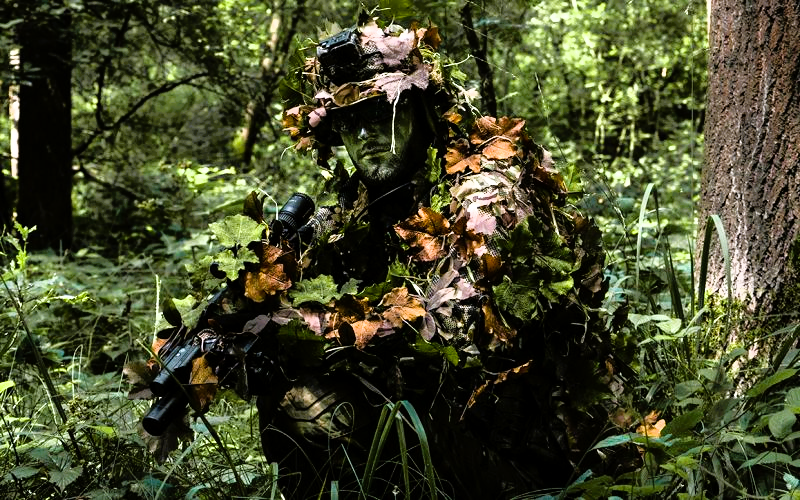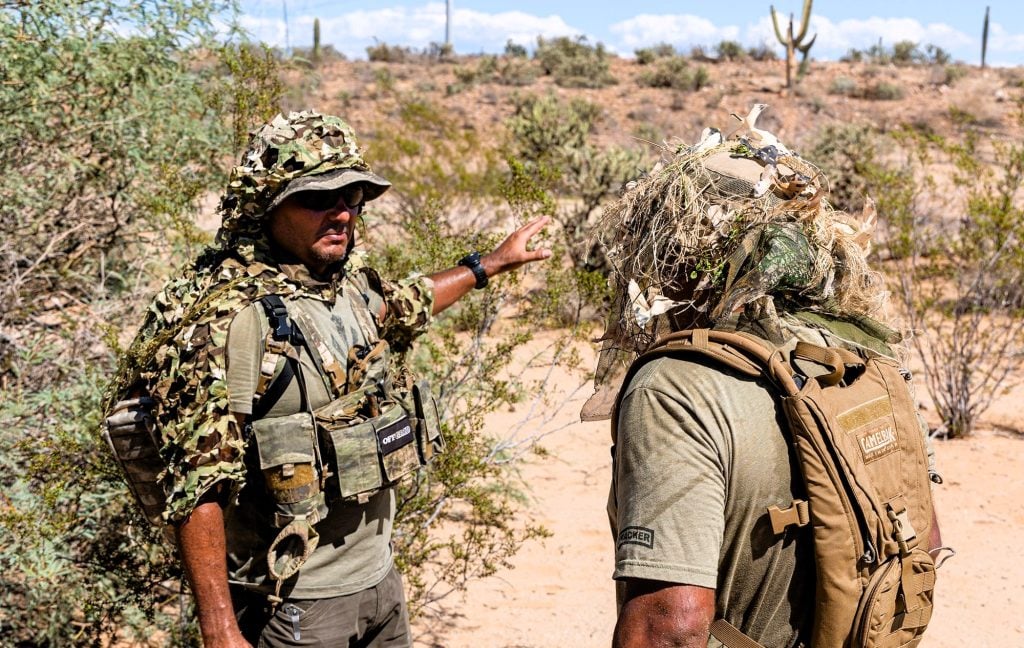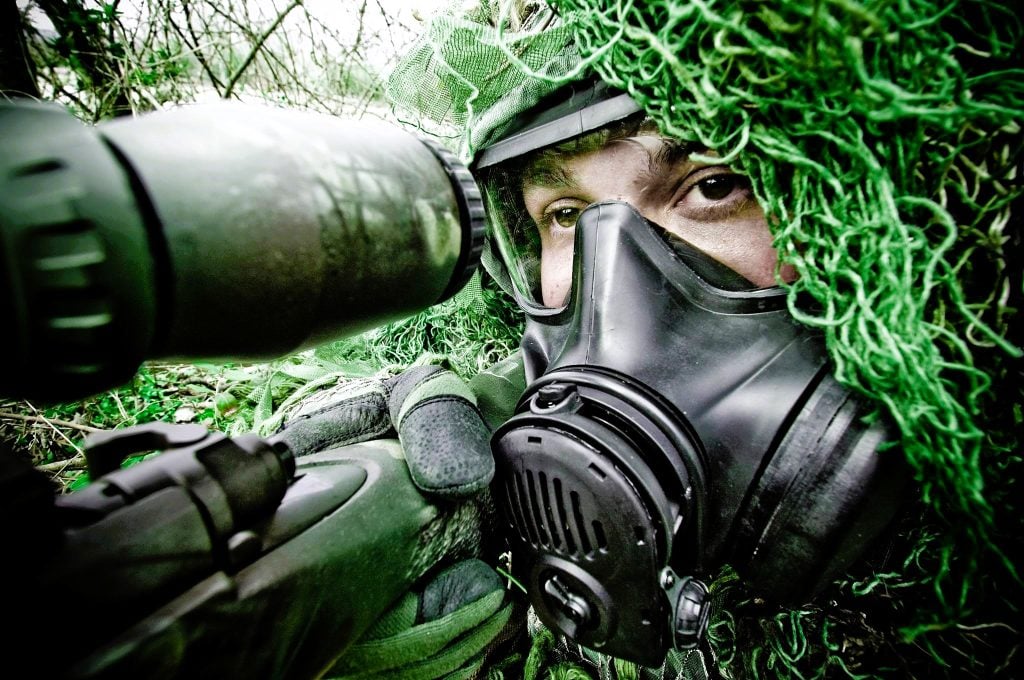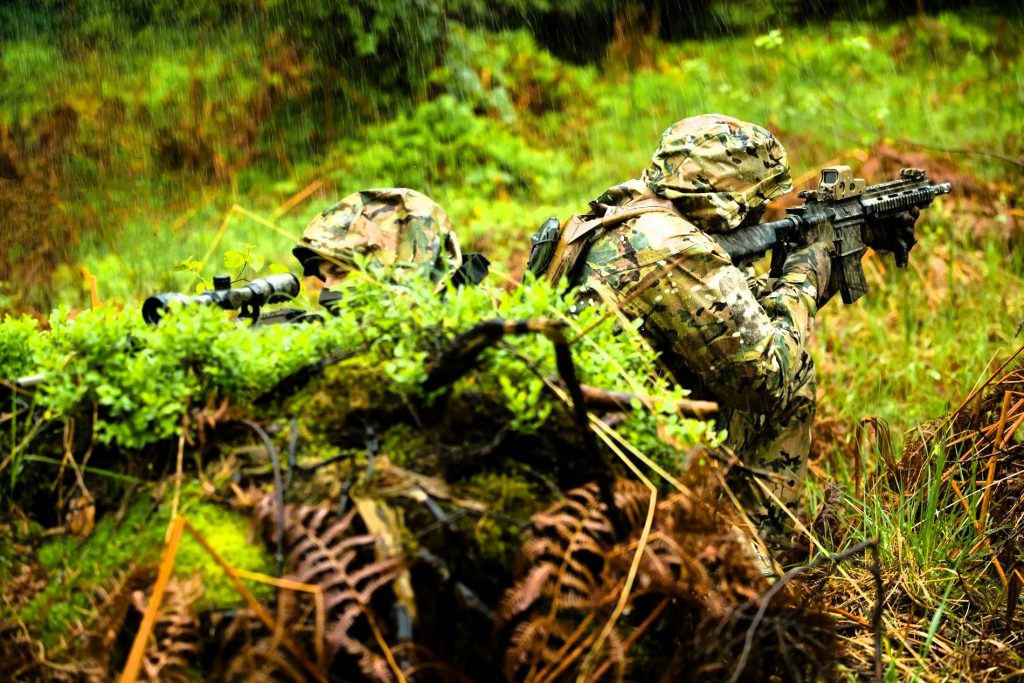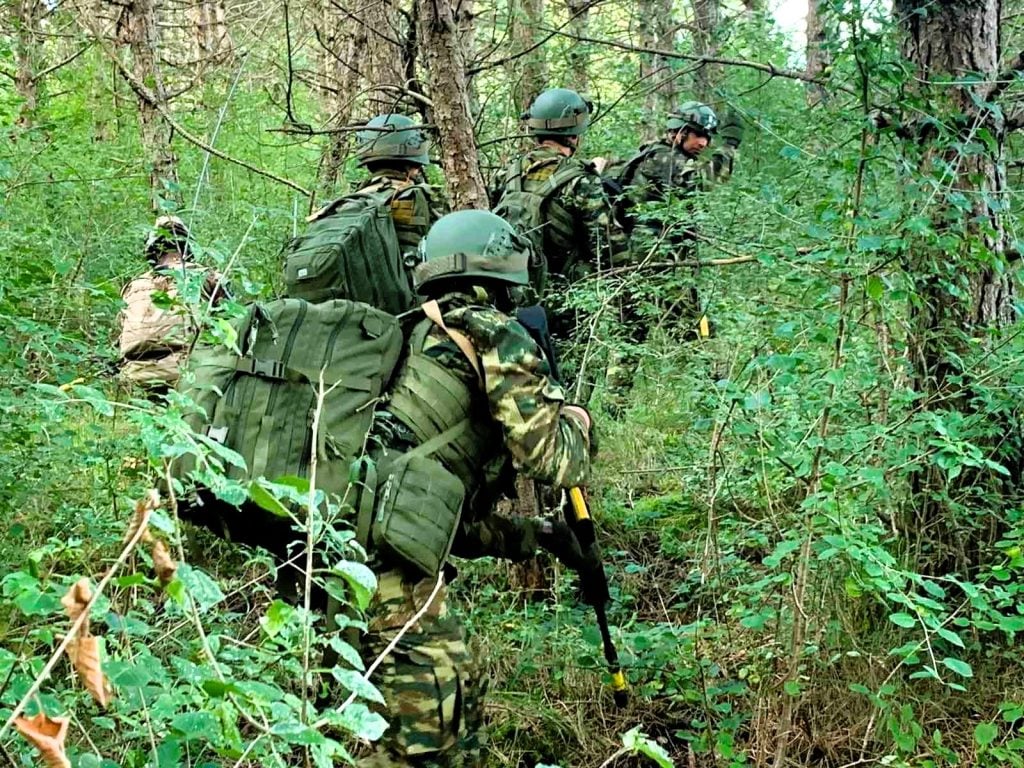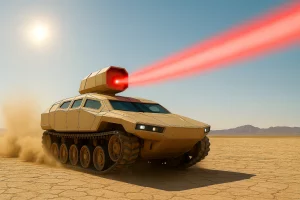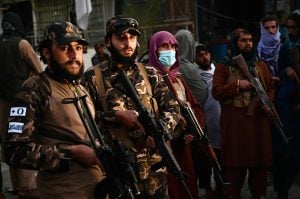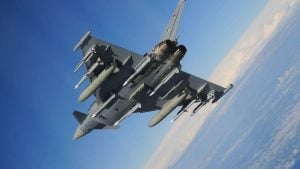Navigating the battlefield without being detected is a crucial skill for any soldier or special operations unit. Camouflage, the art of blending seamlessly into one’s surroundings, has long been a vital tool in the arsenal of the modern military. From the dappled patterns of combat uniforms to the ghillie suits of elite snipers, camouflage techniques have evolved to provide a significant tactical advantage on the modern battlefield.
In this comprehensive guide, we’ll understand what is camouflage and Why Soldiers use it, exploring the visual, movement, and sound-based strategies that enable stealthy movement through even the most challenging environments.
Understanding the Fundamentals of Camouflage
Camouflage is a multifaceted concept that goes beyond simply blending into the background. At its core, it is the art of manipulating color, texture, and illumination to make an individual or object indiscernible from their surroundings. As Staff Sgt. Michael Biza, a U.S. Army Sniper Course instructor, explains, “It’s any type of pattern that will help make you indiscernible or blend into nature rather than trying to look like a bush or look like a tree, you’re just simply trying to look like nothing.”
The principles of camouflage can be divided into three primary pillars: visual, movement, and sound. Each of these components plays a crucial role in the overall effectiveness of a camouflage strategy, and mastering them is essential for moving stealthily through any environment.
Visual Camouflage: Blending into the Landscape
The visual aspect of camouflage is perhaps the most well-known and widely-employed technique. It involves the strategic use of patterns, colors, and textures to eliminate the depth between an individual and their surroundings, making them appear to be a seamless part of the environment.
One of the key elements of visual camouflage is the concept of target detection. “In a wooded environment, you’re gonna see different types of coniferous trees you’ll see leafy bushes, some grass, stuff like that,” Biza explains. These natural variations in the landscape can serve as visual cues, or “red herrings,” that can draw the eye and reveal the presence of a hidden individual. By identifying and eliminating these anomalies, you can effectively conceal your position.
Camouflage patterns can be categorized into three main types: striping, blotching, and a combination of the two. Striped patterns excel in coniferous environments, while blotched patterns are better suited for deciduous landscapes. The U.S. military’s current Operational Camouflage Pattern (OCP) combines these two approaches to provide effective concealment in a variety of settings.
In addition to camouflage patterns, face paint can also play a crucial role in visual camouflage. By darkening the high points of the face and lightening the indentations, the natural contours of the face can be flattened, helping to break up the human silhouette.
The pinnacle of visual camouflage, however, is the ghillie suit. These intricate, vegetation-covered garments effectively conceal the wearer’s outline, transforming them into an indistinguishable part of the surrounding terrain. The latest Improved Ghillie System (IGS) uses lightweight, breathable materials that are also less flammable, making them a versatile and effective tool for elite snipers and special operations units.
10 Top Anti Tank Missiles in the World
Mastering Movement: Navigating Terrain without Detection
Even the most expertly crafted camouflage can be rendered useless if the wearer’s movement is not carefully controlled. Navigating terrain without being detected is a critical component of successful camouflage techniques, and it involves a range of specialized movement strategies.
One of the first techniques taught to Sniper Course students is the “sniper walk,” a slow, deliberate gait that allows the user to cover ground without drawing attention. This method, along with four other movement techniques, emphasizes the importance of adapting one’s pace and approach to the available concealment in the environment.
Foot placement is a crucial aspect of the sniper walk, as walking heel-to-toe helps to minimize the sound signature. Additionally, distributing one’s weight evenly can prevent the triggering of noisy obstacles, such as twigs or branches.
Beyond the physical movement, camouflage also involves the careful management of visual cues. Biza emphasizes that “any type of pattern that will help make you indiscernible or blend into nature” is essential for successful concealment. By eliminating depth and blending seamlessly into the landscape, the user can move with a reduced risk of detection.
Masking Sound: Silencing the Battlefield
While visual camouflage and controlled movement are essential, the third pillar of effective camouflage is the management of sound. Even the smallest noise, such as a twig snapping or equipment rustling, can give away a soldier’s position on the battlefield.
“Anything that can make noise, whether it’s your equipment, your ghillie suit, or yourself, you’re doing everything you can to silence that,” Biza explains. This involves carefully selecting and maintaining equipment, as well as employing techniques to minimize the sound signature of one’s movements.
The sniper walk, with its heel-to-toe approach, is designed to distribute weight and reduce the impact of each step, minimizing noise. Additionally, the use of specialized footwear and the careful placement of equipment can further contribute to a reduced sound profile.
By mastering the art of silent movement, soldiers and special operations personnel can effectively navigate even the most challenging environments without drawing unwanted attention.
10 Brave Soldiers Of Indian Army
Camouflage : Real-World Applications
The principles of camouflage have been employed by militaries around the world for decades, with each nation developing its own unique approaches to suit their specific operational environments.
One of the most well-known examples is the U.S. military’s Operational Camouflage Pattern (OCP), which has been in use since 2015. This versatile pattern, with its mix of colors and textures, is designed to provide effective concealment in a variety of settings, from dense forests to arid deserts.
The British Army, on the other hand, has long used the Multi-Terrain Pattern (MTP), a camouflage scheme that is optimized for the varied landscapes of the United Kingdom and other temperate regions. Similarly, the Russian military has developed the Digital Flora pattern, which leverages a digital-style pixelated design to blend seamlessly into the diverse environments of the Eurasian landmass.
These real-world applications of camouflage techniques demonstrate the importance of adapting to the specific challenges posed by different operational theaters. By understanding the unique characteristics of their surroundings, soldiers and special operations units can select and employ the most effective camouflage strategies to move through space undetected.
Camouflage and Technology
As military technology continues to advance, the role of camouflage in modern warfare is evolving. The integration of cutting-edge materials, sensors, and electronic systems is transforming the way soldiers and special operations units conceal their presence on the battlefield.
One such development is the use of active camouflage, which leverages advanced materials and digital displays to create a dynamic, chameleon-like effect. By sensing and mimicking the surrounding environment, these systems can effectively render the wearer invisible to the naked eye and various optical sensors.
Additionally, the incorporation of thermal-masking technologies and radar-absorbing materials can help to conceal the user’s heat signature and reduce their electromagnetic footprint, making them less detectable to thermal and electronic detection systems.
As the nature of warfare continues to evolve, the importance of camouflage and stealth techniques will only continue to grow. By staying at the forefront of these technological advancements, military forces can maintain a critical edge in the ever-changing landscape of modern combat.
10 Powerful Air Forces In The World 2024
Conclusion
Camouflage is a multifaceted and ever-evolving discipline, one that requires a deep understanding of the natural world and the principles of human perception. From the dappled patterns of combat uniforms to the intricate ghillie suits of elite snipers, the techniques of camouflage have been refined over decades of military experience and technological innovation.
By mastering the visual, movement, and sound-based strategies of camouflage, soldiers and special operations personnel can navigate even the most challenging environments with unparalleled stealth and effectiveness. Whether in dense forests, arid deserts, or urban landscapes, the ability to move through space undetected can mean the difference between mission success and failure.
As we’ve explored in this comprehensive guide, the art of camouflage is not just a matter of blending into the background; it is a complex and nuanced discipline that requires a deep understanding of the natural world and the principles of human perception. By embracing this knowledge and continuously honing their skills, military professionals can ensure that they remain one step ahead of their adversaries, ready to take on any challenge that the battlefield may present.
FAQs
Q1. What are the three pillars of effective camouflage?
The three pillars of effective camouflage are:
Visual camouflage: Blending into the landscape through the strategic use of patterns, colors, and textures.
Movement camouflage: Navigating terrain without detection through specialized movement techniques.
Sound camouflage: Minimizing noise and sound signatures to avoid detection.
Q2. What is the purpose of a ghillie suit in camouflage?
Ghillie suits are one of the most effective tools for visual camouflage, as they effectively conceal the wearer’s outline and transform them into an indistinguishable part of the surrounding terrain. The latest Improved Ghillie System (IGS) uses lightweight, breathable materials that are also less flammable, making them a versatile and effective tool for elite snipers and special operations units.
Q3. How does the sniper walk help with camouflage?
The sniper walk is a specialized movement technique that allows the user to cover ground quietly and efficiently. By walking heel-to-toe and distributing their weight evenly, the user can minimize the sound signature of their movements and avoid triggering noisy obstacles like twigs or branches. This helps to maintain a low profile and reduce the risk of detection.
Q4. How is camouflage technology evolving?
Camouflage technology is constantly evolving, with the integration of advanced materials, sensors, and electronic systems. Developments like active camouflage, which can dynamically mimic the surrounding environment, and the use of thermal-masking and radar-absorbing materials, are transforming the way soldiers and special operations units conceal their presence on the battlefield. As military technology continues to advance, the role of camouflage in modern warfare will only become more critical.
